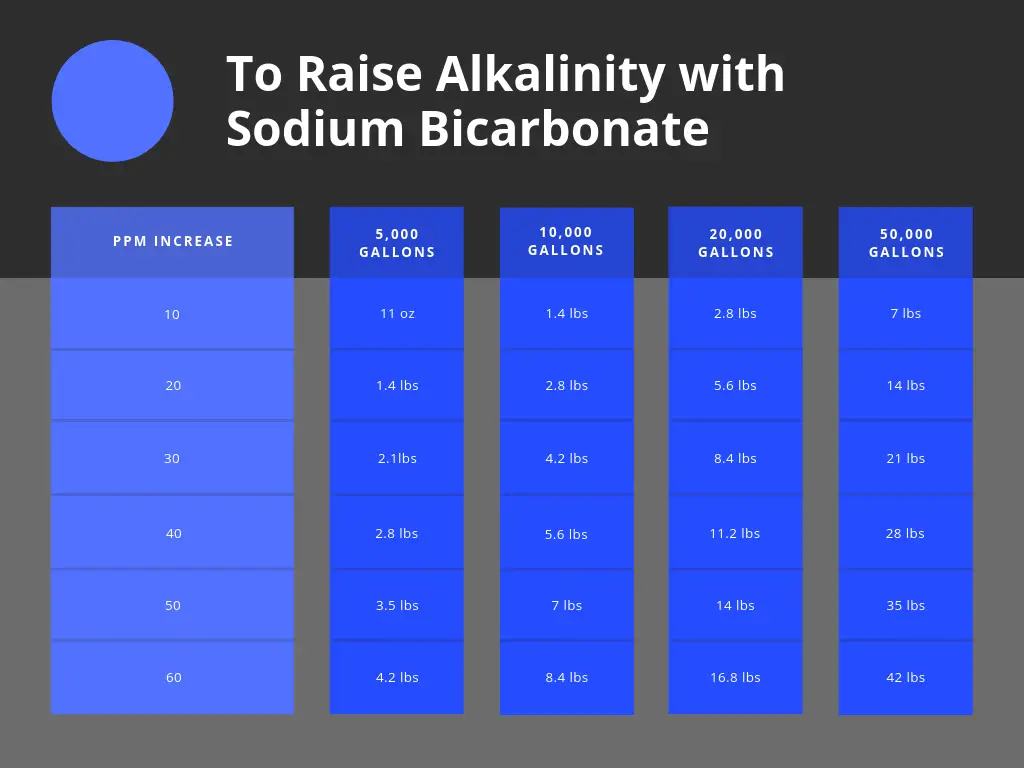Having the proper alkalinity levels in your pool is crucial for maintaining water balance and ensuring a clean and safe swimming environment. Alkalinity acts as a buffer, helping to prevent rapid changes in pH levels that can lead to corrosion, scale buildup, and other water quality issues. In this guide, we will discuss the importance of alkalinity, how to test it, and the steps you can take to adjust alkalinity levels in your pool.

Credit: www.docdeanspools.com
Importance of Alkalinity
Alkalinity is a measure of the water’s ability to resist changes in pH. Proper alkalinity levels typically fall in the range of 80-120 parts per million (ppm) for most pools. When alkalinity is too low, the water can become corrosive, leading to damage to pool equipment and surfaces. On the other hand, high alkalinity can cause cloudiness, scaling, and difficulty in adjusting pH levels.
Testing Alkalinity
Before making any adjustments to your pool’s alkalinity levels, it’s essential to test the water to determine the current alkalinity level accurately. You can use a pool water test kit or test strips to measure alkalinity. Follow the instructions provided with the test kit to obtain an accurate reading.

Credit: waterguru.com
How to Adjust Alkalinity
If the test results indicate that your pool’s alkalinity levels are outside the recommended range, you will need to make adjustments to bring them back into balance. Here are some steps you can take to adjust alkalinity in your pool:
1. Add Ph Increaser Or Decreaser
If the alkalinity levels are too low, you can raise them by adding a pH increaser, such as sodium bicarbonate (baking soda). Follow the manufacturer’s instructions for the proper dosage based on your pool size and current alkalinity levels. On the other hand, if alkalinity is too high, you can lower it by using a pH decreaser, such as muriatic acid.
2. Aerate The Water
To lower alkalinity levels in your pool, you can aerate the water by running fountains, waterfalls, or using an air compressor. Aeration helps to release carbon dioxide from the water, which can lower alkalinity levels over time. Be sure to monitor the alkalinity levels regularly and adjust as needed.
3. Use An Alkalinity Reducer
If you need to lower alkalinity quickly, you can use a commercial alkalinity reducer product. These products are designed to lower alkalinity levels effectively and quickly. Follow the manufacturer’s instructions for the proper dosage and application method.
4. Monitor And Maintain
After making adjustments to your pool’s alkalinity levels, it’s essential to monitor the levels regularly to ensure they stay within the recommended range. Test the water weekly and make any necessary adjustments to keep the alkalinity balanced. Maintaining proper alkalinity levels will help prevent water quality issues and keep your pool water clear and safe for swimming.
Conclusion
Adjusting alkalinity in your pool is an essential part of pool maintenance to ensure water balance and a safe swimming environment. By testing the water regularly, making necessary adjustments, and monitoring alkalinity levels, you can keep your pool water clean, clear, and properly balanced. Remember to follow the manufacturer’s instructions when adding chemicals to your pool and consult a professional if you are unsure about how to adjust alkalinity levels properly. With proper care and maintenance, you can enjoy a sparkling pool all season long!



